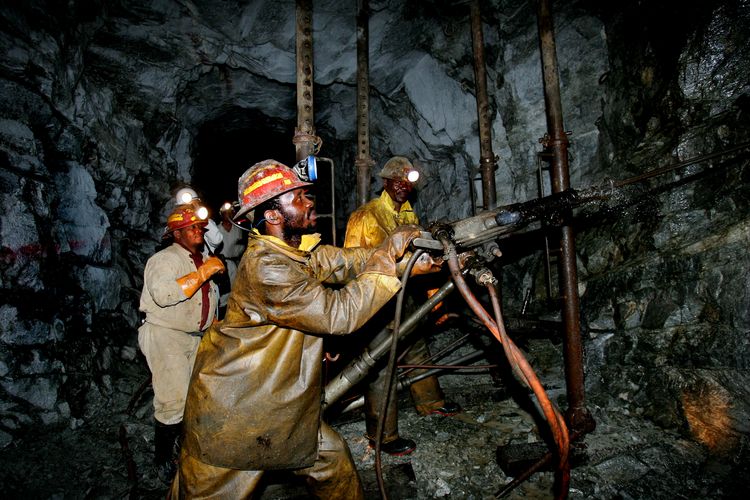Despite many European banks battening down the hatches in the face of the economic storm, Glencore was still able to attract huge global support for its loan deals.
To view the digital version of this report, please click here.
Glencore successfully completed US$27bn of loans within 12 months, proving that commodity firms, with their global reach and large ancillary wallets have remained relatively immune to the eurozone sovereign debt crisis.
The Swiss trading firm’s US$12.46bn loan refinancing which was completed in May provided a rare first-half highlight for the European syndicated loan market. The picture looked bleak as European loan volumes slipped to the lowest levels seen for more than a decade, while market sentiment remained at rock bottom, hit by the interminable sovereign debt crisis and scarcity of M&A financing.
Despite the economic gloom, the success of Glencore’s loan proved there was market appetite for names that could provide appropriate rewards to lenders.
Glencore’s refinancing comprised a new US$4.435bn 14-month revolving credit facility with a 10-month term-out option and 10-month extension option; and a one-year extension to US$8.03bn of an existing US$8.37bn revolver, pushing the maturity out to May 2015.
The new revolver, which refinanced Glencore’s US$3.535bn 364-day revolver due to mature in May 2012, was split between a US$3.725bn tranche, syndicated in Europe and a US$710m tranche syndicated in Asia. The revolver pays a margin of 125bp – an increase of 15bp on the loan it replaced – and a commitment fee of 35% of the applicable margin on undrawn funds. There was also a 50bp term-out fee on the loan.
Banks on the US$8.03bn extension of a financing that was agreed in May last year were offered an extension fee of 45bp on top of the existing 110bp margin.
Financial covenants on the financing included a current ratio of 1.1, a minimum net consolidated working capital of US$750m, and a maximum long-term debt to consolidated tangible net worth of 120%.
Appetite
The refinancing was launched in March for US$10bn via a group of 21 bookrunning mandated lead arrangers: ABN AMRO, BNP Paribas, Santander, Bank of America Merrill Lynch, Barclays, Citigroup, Commerzbank, Credit Agricole, Credit Suisse, DBS, Deutsche Bank, HSBC, ING, JP Morgan, Lloyds, Morgan Stanley, Rabobank, Royal Bank of Scotland, Societe Generale, Standard Chartered and UBS.
The large group of top level banks, each committing US$350m to the deal, meant there was little pressure when it came to general syndication, anything raised would be used to either increase the loan or scale back the bookrunners.
Global co-ordinating banks ABN AMRO, Citigroup, Lloyds, RBS and StanChart held presentations in London on March 28 and in Singapore on March 29.
Lenders on the new revolving credit facility were offered fees of 50bp for commitments of US$100m or more and 45bp for minimum commitments of US$15m.
The deal closed oversubscribed after receiving commitments from a total of 91 banks and was subsequently increased to US$12.8bn. Banks were not put off by the squeeze on dollar funding that had proved difficult on other deals. Lenders were eager to commit to the deal either to receive more generous margins than other BBB/Baa2 rated European names offered or to tap into the rich vein of ancillary business.
“Ample funding remains available, in size, for companies such as Glencore, which are conservatively financed and have long and strong credit track records and banking relationships,” Steven Kalmin, chief financial officer of Glencore said.
Merger financing
The incredible depth of bank appetite for the Glencore name was shown as the company simultaneously signed a 364-day, US$3.1bn syndicated loan backing its US$37bn merger with miner Xstrata. The financing, which included a one-year extension option, raised US$11bn in syndication from 31 banks, which saw a scale-back in commitments of more than 70%. Again, if lenders were averse to committing US dollars, they were not showing it.
The loan was designed to show regulators that Glencore had enough working capital to fund the merger and the company was not expected drawdown.
The financing was launched at US$6bn loan via underwriters Citigroup and Morgan Stanley to relationship banks on tickets of US$300m–$350m, paid a margin of 150bp prior to the merger, increasing to 175bp from the completion of the merger and then rising by 25bp every three months.
After already securing US$15.56bn of loans in 2012, Glencore tapped the loan market yet again in May for a US$1.5bn bridge loan backing its acquisition Canadian grain trading company Viterra. That deal was underwritten by Bank of America Merrill Lynch and Royal Bank of Canada and also paid 150bp.
This time Glencore went easy on banks that had already pledged large commitments, helping to avoid concentration risks by going out to mainly North American and Asian banks as well as a handful of under-exposed European lenders.
As with other commodities firms, Glencore is able to offer large amounts of ancillary business to its large ticket lenders and lots of trade finance side business for retail lenders while its global scope provides some insulation from regional volatility. In addition to the loans, Glencore has also completed US$3.523bn of bonds over the 12-month period, providing banks with even more side-business.

